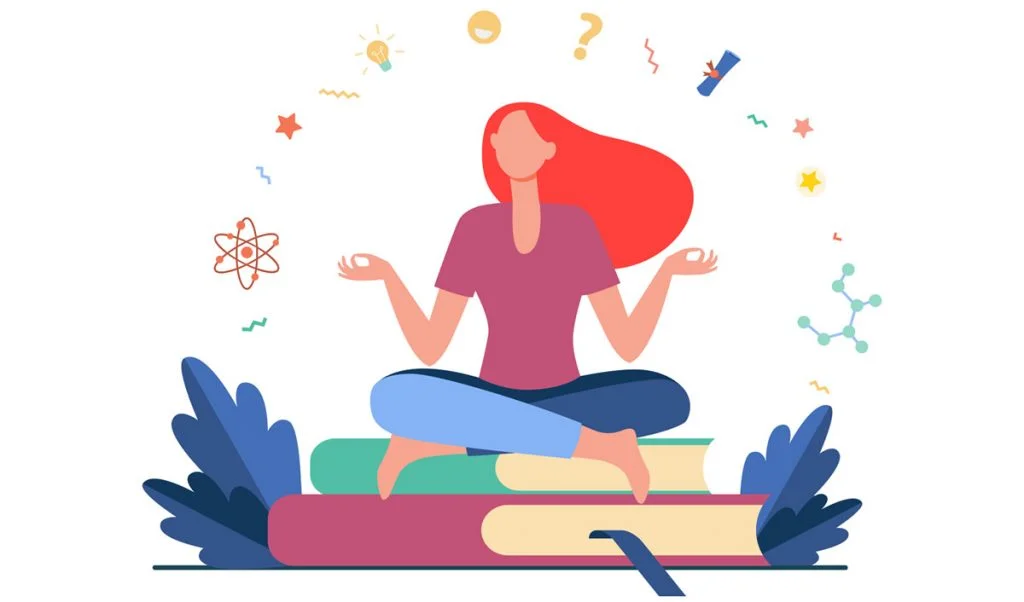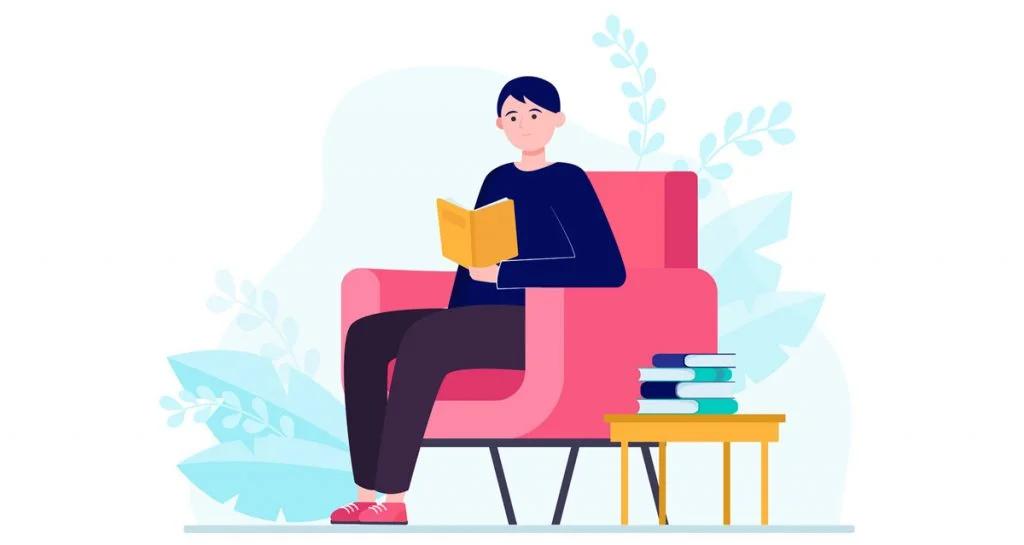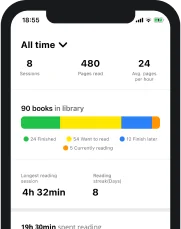Reading is simply an occasional necessity for some, but others take it a lot more seriously. It’s not uncommon for a true book lover to end up spending a whole night reading a book they simply can’t seem to put down.
And while reading in itself is an extremely beneficial activity, the mornings following a night of reading are not as fun, leaving many of us wishing we could combine the two and find a way to read in our sleep. We all know that’s not possible, but the realm of dreams is a mysterious enough place to allow some of us to wonder Can you read in dreams?
What Happens When We Dream?
Before going into more details and finding the answer to the question “can you read in your dreams”, let’s have a quick look at what dreaming is and what happens to our minds and bodies when we enter this mysterious realm that keeps baffling scientists for centuries.
We all know what dreams are to a certain extent: images and stories that our brains create during our sleep. Why we dream and what exactly happens in our brains when we do is still relatively up to debate in the medical community, but here are some of the most reliable, science-backed claims:
- Dreams are a process through which our brain consolidates our memories
- They could have a role in preparing us for future threats
- They could be a mental process through which cognitive functions are being improved
When we dream, even though we are in a state of unconsciousness, our minds enter an alternative reality where almost anything is possible.
Can You Read in Dreams?
Now that we have at least a vague idea about dreams, let’s explore the concept of reading in dreams. The question that is being raised refers to the ability to actually read imaginary text during our dreams, whether it’s books, signs or any sort of text our brains create in the images and stories we dream.
And it’s a valid question. Writing is all around us in our real lives, we see it everywhere all the time. Whether it’s a license plate, the writing on a cereal box or this article you are reading, our minds are constantly exposed to writing and our brains decipher it through reading all throughout the day even when we don’t realise it.
Through dreaming, our brains take information from the real world and transpose it in different scenarios. It is believed that you cannot dream something you haven’t experienced at a certain level, even though it may seem like sometimes we do. You can’t dream a new face, and even if you think you do, the new face you see is actually a combination of features from other faces you’ve seen in reality.
So based on this theory, one can only deduct that reading could be a part of our dreams, since it is deeply rooted in our day-to-day reality.
Well, when it comes to reading, things are different. It has been found that reading in dreams is actually not possible. Even though you may “see” a text in a dream, it’s unlikely for it to actually be written in a language you know or even to exist at all. The things we think we read in our dreams are actually just our own thoughts projected in your subconsciousness, so sadly, you can’t read in dreams.
Why Can’t You Read in Dreams?
While it would have surely been fun, sadly reading in dreams is impossible. But why?
Despite their inability to completely understand the process of dreaming, scientists did manage to find out why you can’t read in your dreams.
Well, first of all, reading in itself is an activity that launches a process that starts at your eyes. Your optic nerve is one of the first elements involved in reading and as we all know, it is completely disabled when we sleep. That makes reading in dreams literally impossible.
Secondly, two other key areas of our brains are partially shut off during sleep: Broca’s area, which is responsible for articulation and speech, and Wernicke’s area, which is responsible for comprehension, structure, grammar and syntax. These two areas are essential for any reading, visualizing words and comprehending them. While they are almost completely disabled during sleep, no reading can occur during dreams in any way shape or form.
There are some exceptions though. It is believed that there are a couple of people who can perform acts similar to reading during dreams. Those people are usually those who handle words on a daily basis in a different manner than most of us: writers, and especially poets. Poetry writing involves looking at words, how they are built and how they can be arranged in sentences that rhyme in a more meaningful way.
Passionate poets, who constantly have their minds invaded by words and the intention of arranging them in creative ways can have dreams that are different from ours and it is believed that some of them can even dream of reading and actually read while dreaming. Poetry doesn’t always need to make perfect sense, it is a more liberal art form where linguistic logic plays a smaller role. Hence, the Wernicke’s area gets involved a lot less and this area of the brain is usually not completely inactive during sleep.
In conclusion, unless you are a true wordsmith, constantly thinking about and using words on the verge of obsession to create art, it is highly unlikely that you will ever be able to read in your dreams.
How to Make the Best of Your Reading While Awake?
For the rest of us who can’t read in our dreams, all that’s left is making the best of our reading experiences when we are awake. And if you take your reading seriously, you should know that there’s a lot more you can achieve if you use a reading app.
Reading apps are tiny little wizards you can get on your phone or tablet and they can help you in different ways: from allowing you to track your reading time, offering you statistics about your reading habits, to allowing you to set schedules, goals and reminders.
Basmo, in particular, has been designed with readers of all levels in mind. The app is easy to use, compatible with iOS and Android mobile devices, and is as feature-packed as it gets.
Here are some of the features we are particularly proud of and our users love the most:
Reading sessions: Whenever you start reading, pick up your phone, open Basmo and initiate a reading session. This will automatically start tracking your reading time and will give you a set of other options we will describe below.
Ending a reading session automatically stores it in your history and gets included in your progress towards your reading goals (I will explain that immediately), and other interesting statistics.
Reading lists: You can either use the Book Collection templates and populate them with the next titles you want to read, or you can even create endless personalized lists of books.
Setting reading goals: The app offers you the option to set daily or yearly goals and helps you track your progress towards achieving them.
Whether you want to read a certain number of books in a year or just want to “micromanage yourself” with a daily number of minutes spent reading per day, Basmo will be of great help.
Notes taking: Taking notes while reading is something many of us do, and for good reason. It helps us remember details from what we read, it allows us to better understand the text and is useful in many other ways. Luckily, Basmo allows you to take notes directly on your phone while a reading session is ongoing. That means that all your notes will remain stored within the book you actually read. The notes can be formatted in different ways according to your preference, making them a lot easier to read and organize.
Book scanning: We know how important it is for an avid reader to be able to quickly save certain paragraphs or quotes while reading. That is why our app allows you to use your phone’s camera to scan pages or paragraphs from your favorite books and extract the text.
Schedule and reminders: The first step towards improving your reading habits and achieving your goals is getting organized. Unsurprisingly, Basmo can help with that as well. The app allows you to set a personalized reading schedule (the time of day can even differ from one day to another and you can even set your schedule for reading sessions that take place every other day instead of daily). On top of this, you can also set reminders which will notify you at the right time about your upcoming reading sessions.
Quotes saving: Many readers have their own collection of quotes from their favorite novels. Basmo users have the option to create their quotes directly from the app either by writing them as notes while reading or by extracting the text by scanning the pages. The good news doesn’t stop here.
Quotes can be edited, written in different fonts and colors, and even converted into images by using predefined templates or your own. You are free to share them on social media as well.
While the features do look interesting to say the least, let me tell you a bit of the actual advantages you will see after using Basmo:
- You will read more. By taking advantage of the goals feature, you will be able to set realistic goals to read more and the scheduling and the reminders will help you achieve these goals.
- You will be more organized. Creating your own reading lists and the ability to schedule your reading sessions as you please and tracking your progress towards your reading goals with insightful statistics will take your reading to another level.
- You will remember more from what you read. It is a well known fact that writing things down activates parts of our brains that ensure that the information is better stored in our memory. Take notes while reading with Basmo and you will see for yourself.
Conclusion
Reading in dreams is unfortunately mostly a myth. With just a handful of exceptions, scientists have been able to establish with a certain degree of certainty that the process of reading and dreaming are quite literally incompatible.
That doesn’t mean however that we shouldn’t try to make the best of our time awake and read as much as we can. Apps like Basmo can be of great help with our reading habits and it would be a shame to miss out on the advantages they bring to the table.







